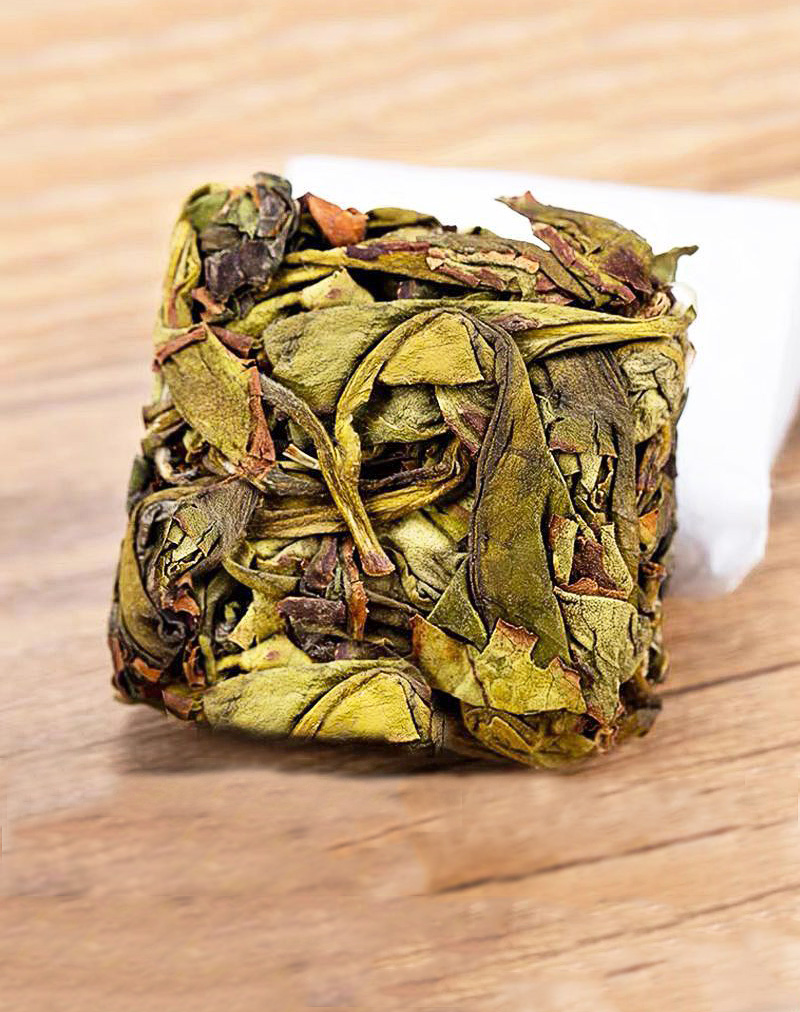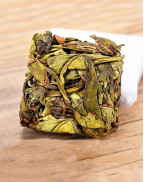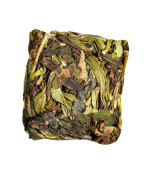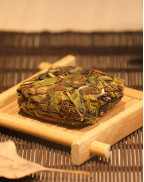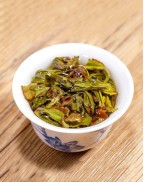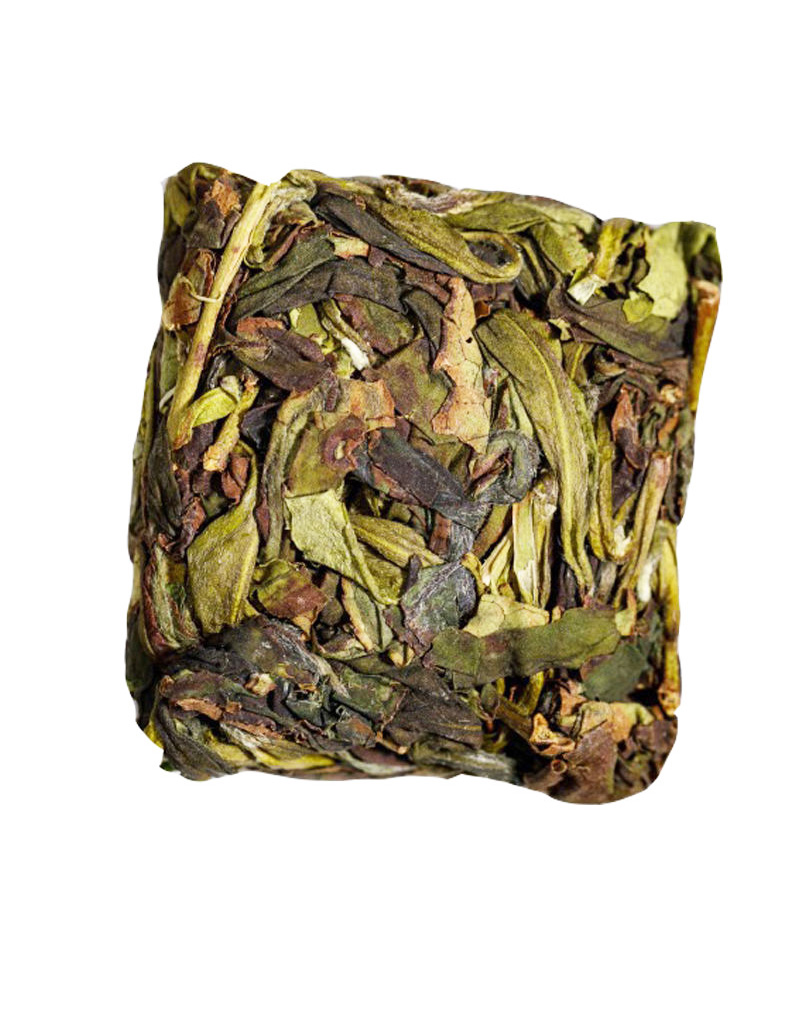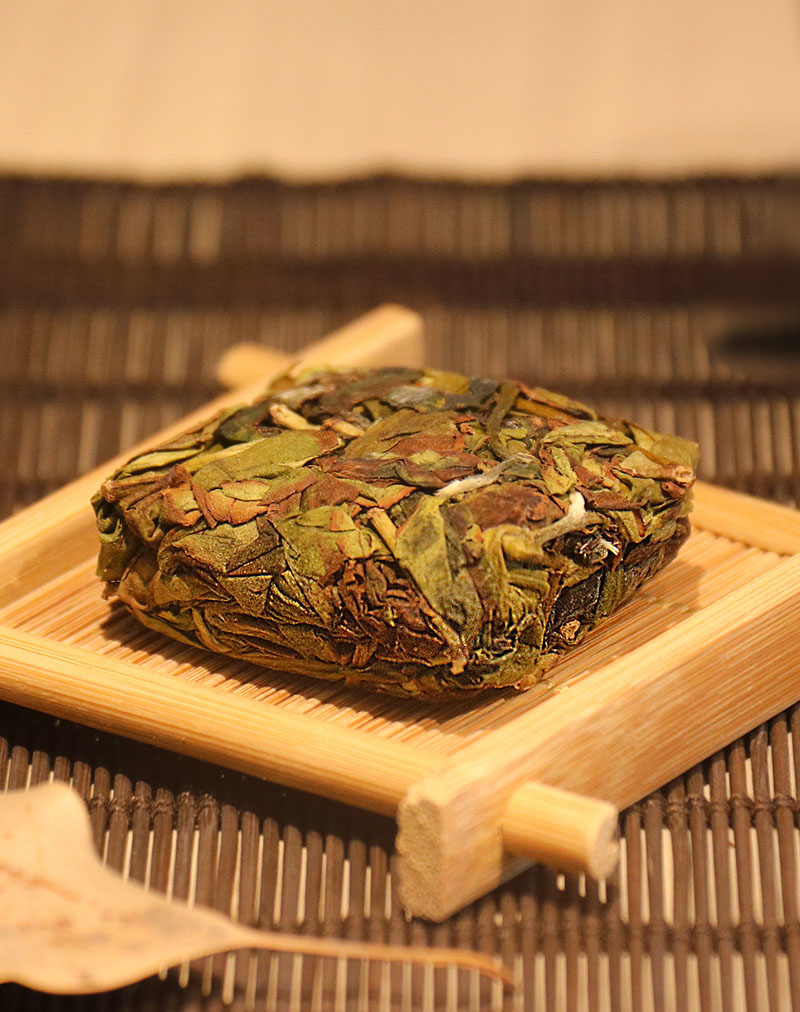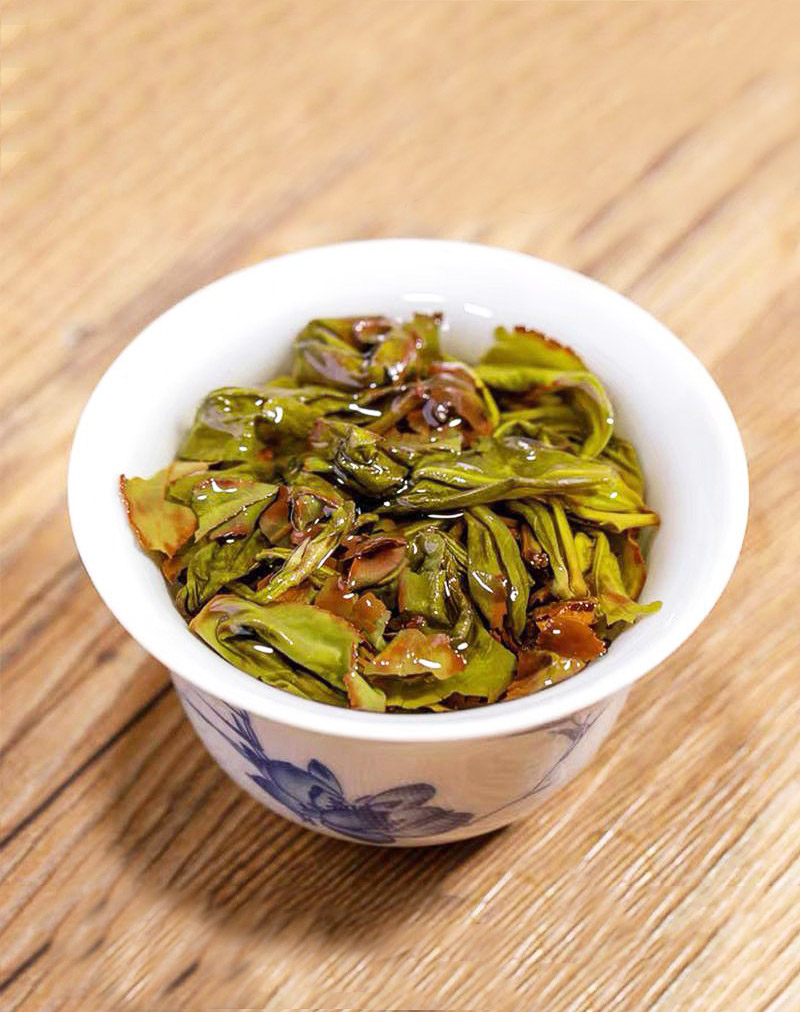Zhang Ping Shui Xian Oolong Tea
- Product Code: simple
- Availability: In Stock
Basic Info
Name: Zhang Ping Shui Xian
Other Names: Zhangping Shuixian
Category: Oolong tea
Origin: Zhangping City, Fujian Province
Tea Bush: Shuixian cultivar
Taste & Aroma: Lovely floral, lightly baked scent, soft and sweet mouthfeel, aromas of orchid, layered, and lingering
Liquor: Golden yellow color,clear and bright
Harvest Period: Spring 2024
Altitude: 1000m
Age of tree: 15-30 years old
Fermentation: Light
Season: Spring tea
Item Form: Square-shaped cakes (8g)
Ingredients: 100% hand-picked natural tea buds and leaves
Degree of baking: Roasted moderately
Shelf Life: 12 months at room temperature / 18 months with low temperature storage
Storage: Stored in cool, airtight, opaque containers - refrigeration is recommended
Flavor: Unflavored
Caffeine: Low
Zhang Ping Shui Xian Oolong Tea
Zhang Ping Shui Xian (漳平水仙) tea belongs to the Oolong tea category and is a traditional and renowned tea created by Zhangping tea farmers. The square-shaped Shuixian tea cake is a unique member of the Oolong tea family, celebrated for its exceptional quality, distinctive style, and a rich traditional flavor with a natural floral aroma, often described as "resembling orchids."
Basic Information
Fujian is one of the provinces with the most famous teas, and not to mention the various other tea types, Oolong tea alone is already so diverse that it can make one's head spin. The Fujian province is renowned for two major branches of oolong tea: the northern Fujian Oolong represented by Wuyi Rock Tea and the southern Fujian Oolong represented by Tie Guan Yin. However, within southern Fujian Oolong, there's a lesser-known variety called "Zhang Ping Shui Xian" Oolong tea, which is much less publicized compared to the fame of rock tea and Tie Guan Yin.
Zhang Ping Shui Xian belongs to the southern Fujian Oolong family, but its place of origin, Zhangping City, is a county-level city located in the western part of Fujian province. In simple terms, Zhang Ping Shui Xian tea is a type of Oolong tea mainly produced in the Jiupengxi area of Zhangping, Fujian province. It falls between green tea and black tea, being semi-fermented, offering the freshness of green tea and the richness of black tea in a well-balanced manner.
Zhang Ping Shui Xian tea, also known as "paper-wrapped tea," originated in the Zhongcun village of Shuangyang town. Initially, it had loose and inconvenient-to-carry tea leaves prone to moisture absorption and deterioration, which led to the addition of a "compression" process after the initial rolling. Initially, the compression was irregular, making it challenging to sell, but later, it was gradually standardized into square-shaped cakes using wooden molds.

The Core Production Area Of Zhangping Shuixian - National Jiupengxi Scenic Area
Show Full Description
On May 27, 2009, the Ministry of Agriculture of the People's Republic of China officially approved the protection of the geographical indication of "Zhang Ping Shui Xian Tea."
The Only Compressed Oolong Tea
Here, "Shuixian" doesn't refer to a type of flower but a tree variety of Oolong tea. For those familiar with Wuyi Rock Tea, you may recognize that the "Shuixian" in Zhang Ping Shui Xian is the same as the one found in Wuyi Rock Tea.
Zhang Ping Shui Xian can be considered an anomaly among Oolong teas. It is the only Oolong tea typically compressed into a recognizable square shape using standardized wooden molds. It is made from the fresh leaves of Fujian Shuixian variety grown within the administrative region of Zhangping City. Typically, these tea cakes are 5 cm square and 1 cm thick, brewed one cake at a time. Although it's compressed, it's not like dark teas, as it has been around since the Republican era.

A Tea Farmer Is Making Zhangping Shuixian
The History of Zhangping Tea Cultivation
Zhangping, an ancient city with a history of five centuries, has preserved its local traditional tea culture despite the changing times. The Shuixian tea made using ancestral techniques is a classic representation of Zhangping's rich tea culture.
Zhangping is one of the significant tea-producing regions in Southern China. Shuixian tea belongs to the Oolong tea family. Legend has it that Shuixian tea originated in the areas surrounding "Jiupengxi," a stream in the region. Jiupengxi nourishes this beautiful and fertile land, and its residents benefit from a subtropical climate and exceptional natural conditions, leading to tea cultivation dating back to the Yuan Dynasty. By the Ming and Qing periods, tea cultivation had become substantial, with dedicated tea processing workshops. In the 20th year of the Guangxu reign in the Qing Dynasty, Zhang Ping Shui Xian tea selected by "Taichang Tea Plant" won gold awards at the Panama Exposition and the Shanghai Exposition. Excavated Ming Dynasty purple clay teapots from the area reveal that Zhangping has a long history of Gongfu tea culture and tea appreciation.
The Production Process
The production process for Zhang Ping Shui Xian tea cakes involves the following steps:
Fresh leaves → Sun-drying → Air-drying → Initial withering (alternating between shaking and withering) → Fixation → Rolling → Shaping (including shaping and setting the shape) → Roasting.
A notable feature of Zhang Ping Shui Xian tea production is the emphasis on sun-drying and the incorporation of both northern Fujian Oolong and southern Fujian Oolong techniques in the initial withering phase. Water sieves are used for the initial phase of withering, followed by a shaking machine for the latter phase, with light shaking principles initially and slightly heavier shaking in the later phase. Air-drying is conducted thinly and extensively. After pan-frying and rolling, the tea is uniquely shaped using wooden molds and set using filter paper. The final step involves fine roasting over charcoal, resulting in a distinct appearance, excellent quality, and a unique style for this single compressed Oolong tea.
Furthermore, while many Oolong teas have adopted processes like light shaking and light fermentation to reduce the red edges of the leaves, Zhang Ping Shui Xian has retained the traditional "green heart with red edges" characteristic of Oolong tea. This distinctive feature results in visibly red edges on the tea leaves and a slightly deeper golden hue in the tea infusion, compared to the clear and fragrant Iron Goddess of Mercy (Tie Guan Yin) tea.

The Tender Leaves And The Paper-Wrapped Tea of Zhangping Shuixian
Growing Environment
Zhangping is not only the homeland of tea but also known as the "hometown of Chinese flowers and plants" and the "hometown of Chinese azaleas." Zhangping County includes nine townships: Nanyang, Shuangyang, Chishui, Xinqiao, Wuci, Lingdi, Xinan, Xianghu, and Yongfu.
The Impact of Natural Environment on Shuixian Tea
The unique quality of Shuixian tea is closely related to the natural environment in which it grows. The unique soil composition, rich in minerals, provides tea plants with abundant nutrients. The high-altitude growing regions moderate the growth rate of tea plants, resulting in tender, vibrant tea leaves. These factors collectively shape the distinctive flavor of Shuixian tea.
At the junction of Beiliao in Nanyang Township and Zhongcun in Shuangyang Town, there is a peak named Shiniudong, with an elevation of 1,365 meters. Its steep cliffs are shrouded in mist year-round, and it still harbors several dozen mother Shuixian tea trees, with one of them reaching a remarkable height of 7.35 meters. This rare ancient Shuixian tea tree is hailed by experts as a living fossil of Shuixian tea and is revered by locals as the "immortal tea," believed to have extraordinary effects on stomach ailments and diarrhea.
Unique colors, fragrances, and flavors are owed to the excellent environmental conditions of the soil, water, and air along the banks of Jiupengxi. Zhangping City is located in the central-southern part of Fujian, the eastern part of western Fujian, and the northern tip of the Fujian Golden Triangle. It is known as the "Land of Nine Mountains, Half Water, Half Farmland." The city enjoys a subtropical climate, characterized by warm and humid conditions, abundant rainfall, mild winters, and moderate summers. The annual average temperature ranges from 16.9°C to 20.7°C, with 1,450-2,100 millimeters of rainfall, a frost-free period of 251-317 days, and an average annual sunshine duration of 1,853 hours. These conditions are conducive to the cultivation of various crops, fast-growing forests, and the thriving of diverse flora and fauna, providing favorable natural conditions for tea production.

Tea Gardens In Zhangping City, Fujian Province
Classification of Zhang Ping Shui Xian Tea
Classification by Appearance:
The product is divided into Zhang Ping Shui Xian Tea (compressed into square shapes) and Zhang Ping Shui Xian Tea (loose leaf tea).
Classification by Processing:
a. Light Fragrance Type Zhang Ping Shui Xian Tea:
Tea leaves produced using specific processes, such as mild roasting, in the initial stages of processing are called Light Fragrance Type Zhang Ping Shui Xian Tea.
b. Strong Fragrance Type Zhang Ping Shui Xian Tea:
Tea leaves produced using specific processes, including roasting, after the initial stages of processing are called Strong Fragrance Type Zhang Ping Shui Xian Tea.
Zhang Ping Shui Xian has both traditional and modern processing methods. In reality, there is no clear preference between the two, and the differences in processing are not significant. The main distinction lies in the degree of fermentation: traditional methods involve heavy shaking and heavy fermentation, similar to rock tea, while modern methods employ light shaking and light fermentation, resembling the Light Fragrance Type Tie Guan Yin.
Characteristics
Zhang Ping Shui Xian tea leaves are relatively large, and they are distinguished by their iconic square-shaped tea cakes. However, its true allure lies in its inner qualities. Zhang Ping Shui Xian exudes a high, lingering aroma often described as "resembling orchids and cassia." Its taste is smooth, refreshing, and lively. Renowned tea master Zhang Tianfu once called Zhang Ping Shui Xian "the belle of Oolong tea," and this is not an exaggeration. This "belle" has a distinctive charm, with a captivating, subtle fragrance that makes it irresistible. Zhang Ping Shui Xian's infusion is a golden yellow color, retaining the traditional red edges of Oolong tea.
The characteristics of this tea have been detailed in the previous sections, including its production process, aroma, taste, appearance, and other aspects. The uniqueness of Shuixian tea lies in being the only compressed Oolong tea cake, making it stand out in the world of tea.

Fujian Province
Awards
Zhang Ping Shui Xian tea has been exported overseas since the early years of the Republic of China, with significant exports to regions and countries in Southeast Asia such as Hong Kong, Taiwan, and Japan. In 1995, it received a gold award at the 2nd China Agricultural Expo and has won numerous awards in various Fujian province tea competitions. It is also part of the collection at the China Tea Museum, making it a member of China's prestigious teas. In September 2021, it was listed as a nationally recognized, special, and superior new agricultural product, included in the second batch of the National Catalog of Special and Superior New Agricultural Products for 2021, and issued the National Certificate of Special and Superior New Agricultural Products.
What Does Zhang Ping Shui Xian Taste Like?
Zhang Ping Shui Xian has a floral fragrance that is long-lasting and characterized by a high, subtle aroma. This aroma is mainly derived from the natural aromatic compounds present in the tea leaves themselves, revealed through specific processing methods. It belongs to the complex aroma category and is described as having characteristics such as orchid and gardenia fragrances, with a predominance of a subtle and lingering fragrance.
Summary
Zhang Ping Shui Xian tea belongs to the Oolong tea category and is a traditional and renowned tea created by Zhangping tea farmers. The square-shaped Shuixian tea cake is a unique member of the Oolong tea family, celebrated for its exceptional quality, distinctive style, and a rich traditional flavor with a natural floral aroma, often described as "resembling orchids."
| Chinese Gongfu Method | |
| Tea | 1 cake |
| Water | Gaiwan 5-7 oz / 150 -220 ml |
| Time | 7 steeps (10s,15s,20s,20s, 25s, 40s, 50s) |
| Temperature | 90°- 100℃ |
| Teapot Method | |
| Tea | 1 cake |
| Water | Teapot (8oz / 240ml) |
| Time | 1- 4mins |
| Temperature | 90 - 100℃ |


